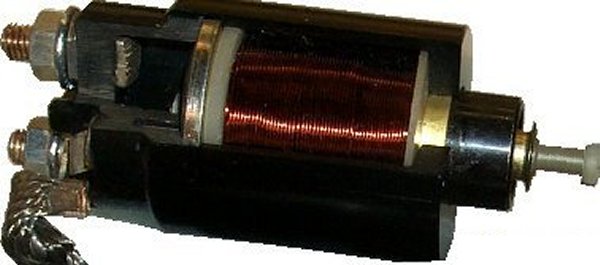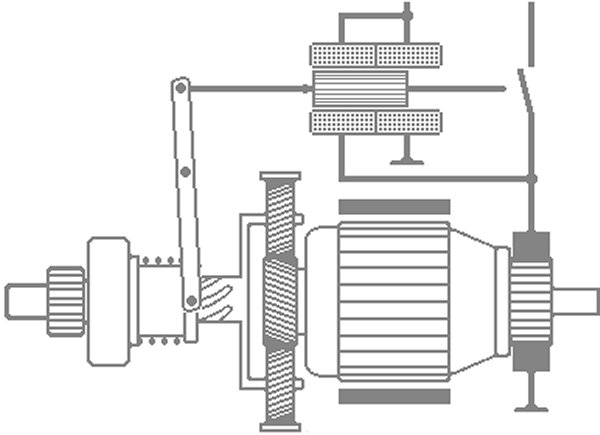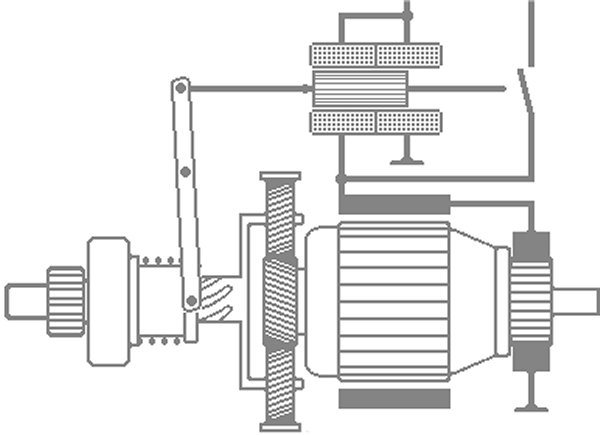
|
Solenoid

| Magnetic switch with intake and hold winding |
Function
To draw off as little current as possible when the starter button is operated
- to produce the gear-wheel connection between the starter and the combustion engine,
- to maintain this connection,
- to switch on the starter current.

After starting the engine
- to allow the starter gear-wheel to retract,
- to switch off the starter current.
How it works
The solenoid is generally mounted immediately above the starter. When the starter switch is switched on, the pull-in windings (on the
left) and the hold-in windings (on the right) receive current through the terminal '50' and move, through magnetic induction, an iron core in the axial direction. Through a lever, the small pinion of the starter is pulled
towards the fly-wheel. If the gearwheel connection takes place, the high starter current is switched on through a large cross section at the rear side. At the
same time, the pull-in windings (on the left) are short-circuited through the starter current and switched off, thus causing a lower strain on the energy supply.

Defects
If one hears a clicking sound when turning on the starter current, this is, even if the starter does not turn, a sign of an intact solenoid. Then at most, the problem can be a smouldering when turning on the starter current,
or any other defect of the large cross section at the end. A somewhat rarer case is, if the starter repeatedly meshes in and then out again. This then probably means that the hold-in winding is damaged.
12/09
|
|